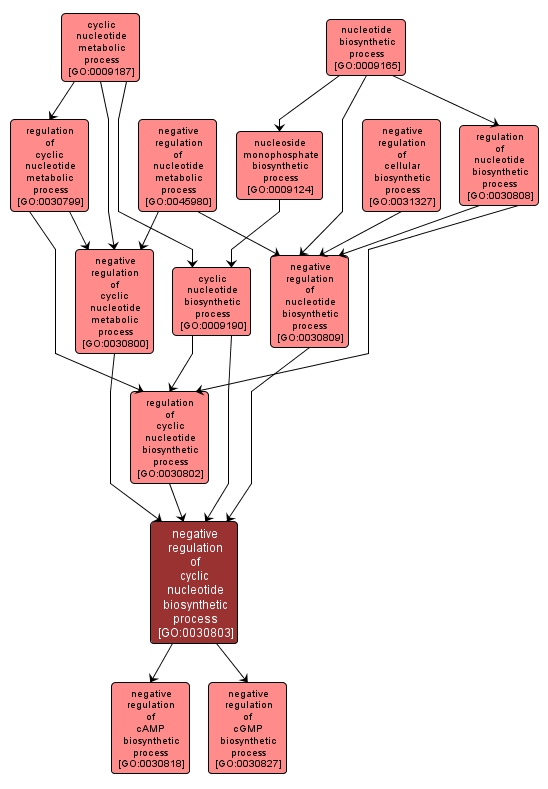GO TERM SUMMARY
|
| Name: |
negative regulation of cyclic nucleotide biosynthetic process |
| Acc: |
GO:0030803 |
| Aspect: |
Biological Process |
| Desc: |
Any process that stops, prevents or reduces the frequency, rate or extent of the chemical reactions and pathways resulting in the formation of cyclic nucleotides. |
Synonyms:
- negative regulation of cyclic nucleotide biosynthesis
- downregulation of cyclic nucleotide biosynthetic process
- inhibition of cyclic nucleotide biosynthetic process
- down regulation of cyclic nucleotide biosynthetic process
- negative regulation of cyclic nucleotide formation
- negative regulation of cyclic nucleotide anabolism
- negative regulation of cyclic nucleotide synthesis
- down-regulation of cyclic nucleotide biosynthetic process
|
|

|
INTERACTIVE GO GRAPH
|














